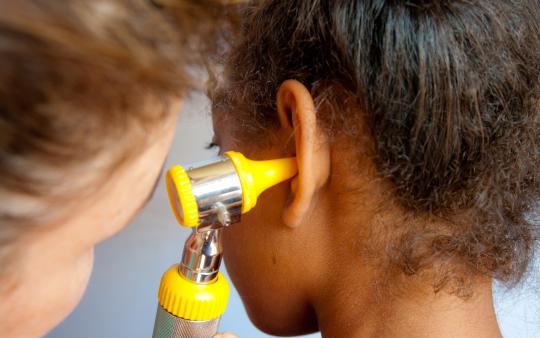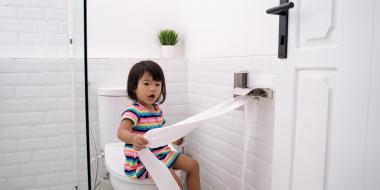Generally known as acute otitis media, middle ear infections are quite common in young children because of their ear's anatomy and their immune system. Adults have ear canals (known as Eustachian tubes) that slant down towards the nose and mouth, promoting proper drainage of fluid. Children, on the other hand, have horizontal ear canals making drainage challenging. Ear fluid then has the ability to collect and create a blockage. As they continue to grow and develop, the ear canal eventually slopes downwards to resemble that of adults.
Because children have immature immune systems until they’re about 7 years old, they’re more likely to get sick when they encounter a bug. Once their immune system encounters a virus, it will be activated and cause increased fluid production, leading to inflammation and swelling of the ear, nose and throat. Ear infections can be also be triggered by cigarette smoke, pacifier use, and drinking while lying down.
What are the symptoms to look for?
Ear infections can accompany upper respiratory tract infections, so symptoms like coughs and runny noses may be seen. Typically though, you may see a child tugging at their ear, notice a change in their hearing, and some children may verbally tell you that their ear hurts. Other symptoms can include: insomnia, decreased playfulness, irritability, fever, vomiting, and lack of appetite.
Conventional and natural treatments
Children are commonly given antibiotics when they present with an earache or ear infection, however since most infections are caused by viruses antibiotics may be of minimal benefit. Oftentimes, the best practice for an infection is to ‘watch and wait.’
Nevertheless, when it comes to ear infections, reducing inflammation and pain within the ear is the goal, and a few natural solutions can achieve this.
- Hydration: Ensure that your child is well hydrated, including continuing to breastfeed or offering your child water, herbal teas, and warm soup.
- Eliminating dairy: Dairy can cause thickening of mucus thus preventing drainage of the Eustachian tube. Limit fluids to plain water or dairy alternatives.
- Lymphatic massage: Using castor oil, and following the chain of cervical lymph nodes from behind the ear down the neck, a massage will help promote drainage of the Eustachian tube.
- Probiotics: As children are often given antibiotics to kill any causes of infection, taking a probiotic helps re-establish gut bacteria and immune health.
- Vitamin C: A great anti-inflammatory, vitamin C will help decrease inflammation present within the ear canal.
- Botanicals: Echinacea and goldenseal are potent antimicrobial herbs that can rid a child’s body of unwanted bugs. Speak with a naturopathic doctor or herbalist before incorporating them into your child’s routine.
- Garlic infused ear oil: Another antimicrobial, garlic-infused ear oil can help directly at the site of pain.
If your child’s tympanic membrane has perforated (where clear liquid or blood is noticeable from the ear), has a high fever (over 39C) that has persisted for a few days, or is in an incredible amount of pain, it is recommended to seek treatment from a medical doctor. Moreover, be on the lookout for a severe headache, stiff neck, and lethargy as those are common indicators of meningitis, and need medical attention right away.
When it comes to your child's healthy and safety, it's important to be prepared. Make sure you've got a first-aid kit at home well-stocked with these essentials.






